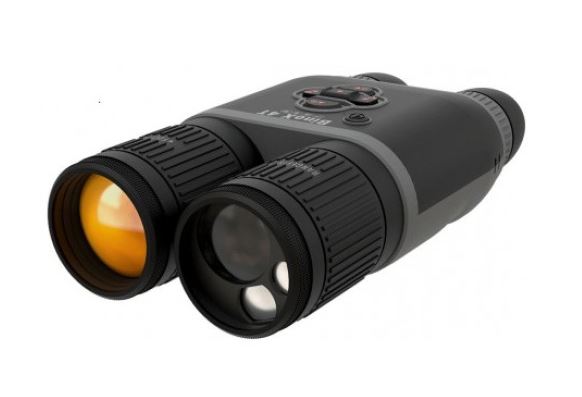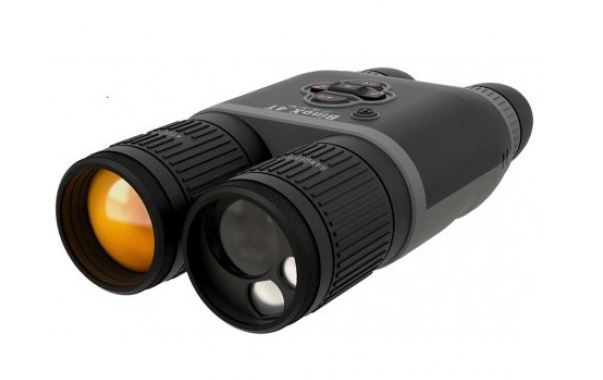Products:
- https://www.optics-trade.eu/en/primary-arms-compact-3x-sfp.html
- https://www.optics-trade.eu/en/primary-arms-gen-ii-3x-compact-prism-scope.html
Thank you for choosing this Primary Arms optic.
If you have any questions about your new optic or any of our other products, visit us at www.primaryarmsoptics.com, email us at [email protected], or give us a call at 713-570-1910. The customer service team at our headquarters in Houston, Texas will respond promptly.
If you have any problems with a Primary Arms product, we urge you to contact us immediately and let our customer service professionals handle the situation for you. There is no need to return your scope to the retailer.
GEN II WITH PATENTED .223/5.56, 5.45X39, .308 ACSS® CQB™ RETICLE
This scope utilizes an internal prism design, resulting in a very compact scope. Due to this design, when viewed at certain angles and distances the reticle may appear canted (tilted to the left or right). Each individual scope has been checked for correct reticle presentation and illumination. The scope should be mounted on a rifle and viewed using the correct eye relief, and the reticle will appear in its proper alignment. Our high quality anti-reflection objective lens attachment is also available, part numbers PA3XKF and PA3XKF-FDE.

ACHIEVING A CLEAR RETICLE PICTURE
Setting the adjustable diopter ring (E) at the rear of the eyepiece is a critical first step to successful precision shooting. Looking at a featureless light background like a clear blue sky or blank wall, the reticle should appear sharp and crisp. If it does not, you need to adjust by turning the diopter ring (E). If you are farsighted, turn the diopter ring clockwise; if nearsighted, turn it counterclockwise. Look at the scope with quick glances and adjust until the reticle is clear at first glance. This is a one-time adjustment. Because everyone’s eyes are different, the ideal adjustment will vary from person to person.
The reticle details may appear small when not looking at the ranges they are set for, beyond 300 yards. Shooting at those ranges is best done from a well-supported position.
RETICLE ILLUMINATION

The illumination knob on the top of the scope is marked with numbers of increasing brightness from 1 to 11. The knob cap unscrews counter-clockwise, holding a CR2032 battery with the positive (+) side facing towards the cap. Reticle illumination at the lower settings is useful in low light situations like sunrise and sunset. The highest two settings are “daylight bright” settings. Using these settings in low light situations will overpower your eye’s ability to see the target and make the reticle appear distorted. The right amount of illumination creates a clear contrast between the reticle and your intended target, without straining the eye.
THE REMOVABLE BASE AND SPACER
Thread locker is recommended on the base and accessory rail screws. The 3mm hex base screws (E5) may be removed for use with AR-15 carry handle upper receivers in conjunction with our Steel Knurled Head Thumb Screw, part no: 92581A320.
The 3x Compact Prism scope features a removable spacer (D4) in between the base and the scope body. Use the spacer for firearms with straight line stocks such as AR-15s. Removing the spacer brings the scope body lower for use with firearms with stocks located lower than the receiver, like AK-47s. The scope body is compatible with full size ACOG® style mounts with or without the spacer installed.
THE REMOVABLE 1913 MIL STD RAIL
The top mounted 1913 MIL STD rail (B2) is useful for mounting a reflex sight or other accessories above the compact prism scope. It is removable by turning the four T10 torx screws (A1) counter clockwise and removing them. Removing the 1913 rail shaves a bit of weight and bulk from the scope. To replace the 1913 rail, torque the screws to only 5 inch pounds after applying a 5 small amount of blue thread locker. Do not overtighten the screws, this is a very small amount of torque!
GETTING TO KNOW THE ACSS CQB ™ M2 RETICLE
The ACSS ® (Advanced Combined Sighting System) is a giant leap forward in reticle design that uses bullet drop compensation correlated with range estimation, wind holds and moving target leads in one simple to use system. The ACSS 5.56 CQB reticle increases first hit ratio and decreases time on target dramatically. You can find more information about ACSS and how to use your reticle by visiting www.primaryarmsoptics.com.

DIALING IN FOR YOUR BARREL LENGTH AND AMMUNITION
Using a bipod or sandbags, preferably on a bench or in the prone position, adjust your turrets to dial in your point of impact to the center dot. Each click is 0.25 MOA, or 0.25 inch at 100 yards.
Your point of impact will vary depending on type of ammunition, barrel length, and altitude above sea level. Locate your ammunition type in the chart below. For 5.56 NATO and 5.45×39 loads, match your ammunition type and barrel length with your altitude above sea level, and zero your scope at the distance indicated. For other loads, find your bullet weight and velocity and zero your scope at the distance indicated. Plus (+) and minus (–) numbers indicate desired bullet impact in inches above or below your point of aim. For example, a shooter firing M855 using a 16” barrel will want to sight in a half inch high at 1000ft above sea level, dead on to point of aim at 2000ft above sea level, and a half inch low at 3000ft above sea level, zeroing at 100 yards.

GETTING TO KNOW YOUR BULLET DROP COMPENSATION (BDC)
Gravity will affect your bullet’s trajectory (or path). The BDC ladder starts at the center dot and finishes at the 600 yard mark. Simply aim using the hash mark that coincides with the range to target. For targets at ranges between hash marks you can split the difference. For example, for a target at 450 yards you should aim halfway between the 400 and 500 yard hash marks. We recommend that you establish a steady, supported position in order to utilize the BDC.

UNDERSTANDING THE WIND AND BULLET DRIFT
Notice the 5 mph wind hold dots aligned with the BDC. Wind will cause the bullet to drift left or right depending on wind direction. Understanding wind is important, as even a 2 mph wind at a 90 degree angle to the bullet’s path can cause the bullet to drift over 10” at 600 yards. The wind holds correspond to the BDC ladder and represent how much a 5 mph wind will push the bullet at that range. For a wind pushing left to right, use the dots on the right side of the reticle. For a wind pushing right to left, use the dots on the left side of the reticle.
You can use the dots as a starting point in different conditions. For example, if you have approximately a 2.5 mph wind, you would hold half-way to the dot. If you have a 10 mph wind, you would double the hold of the dot, and so on.

LEADING YOUR TARGET
The average target moves at 8.6 mph. The “lead dots” are set for a target moving at a 90-degree angle to the shooter. Depending on the direction of the target’s movement, fire using the “lead dots” instead of the center dot in red. They are best used at 100 to 300 yards and are highly effective on targets of opportunity.

HOW TO RANGE YOUR TARGET
ACSS automatic ranging greatly reduces the time between spotting the target through the scope and firing a correctly aimed shot. There is need to run data, do math, or physically adjust the scope’s settings. Wrong range estimation is the number one reason shots are missed—ACSS directly addresses this issue!
Knowing the proper range of your target is crucial in order to use the right hold on the BDC. The horizontal bars range estimate center mass on targets 18” wide, and predators or small game with an approximately 18” measurement from shoulder to hip. Simply line up the target’s width with the appropriate line to determine range to target. For example, an 18” wide target that appears to be the same width as the ranging line with a “6” next to it will be 600 yards away. This method is useful when the target’s height is partially obscured, as with a target in tall grass.
Bullet drop compensation is correlated with the horizontal ranging. Once you have determined range to target using horizontal ranging, you are already using the correct holdover to fire accurately (assuming no need to shift left or right due to wind).
Vertical ranging is calibrated for a 5’10” tall target. Looking through the scope at the target, line up the bottom of the target with the lowest line on the ranging ladder. The line that coincides with the top of the target indicates the distance to the target. For example, if the top of the target touches the second line from the top, the target is 400 yards distant. The ranging lines may be used as reference points to make more precise, yet quick ranging determinations. For example, a 5’10” target with its top midway between the top ranging line and second ranging line will be approximately 350 yards away

SPECIFICATIONS

FEATURES

LENS CARE
Please do not use any organic solvent such as alcohol or acetone on your scope. First, blow dust or any foreign objects off of the lens. Then, use a soft cotton or microfiber lens cloth to clean any fingerprints or smears off the lens. Alternatively, you may use a piece of professional lens paper for further cleaning, if necessary.
- WARNINGS: Always ensure your firearm is unloaded (chamber empty and magazine removed) before installing optics or accessories.
- WARNINGS: Improper installation of firearm component parts or accessories may result in death or serious personal injury. If you are not properly trained in the installation of these parts, have them installed by a gunsmith or armorer.
REMEMBER: THE FOUR RULES OF FIREARMS SAFETY
- Treat every firearm as if it were loaded
- Never let your muzzle cover anything you are not willing to destroy
- Keep your finger off the trigger until your sights are on target
- Be sure of your target and what is behind it
WARRANTY
Your Primary Arms 3x Compact Scope is covered by the Primary Arms Lifetime Warranty. If a defect due to materials or workmanship, or even normal wear and tear, has caused your product to malfunction, Primary Arms will either repair or replace your product. You can find more details at www.primaryarmsoptics.com




